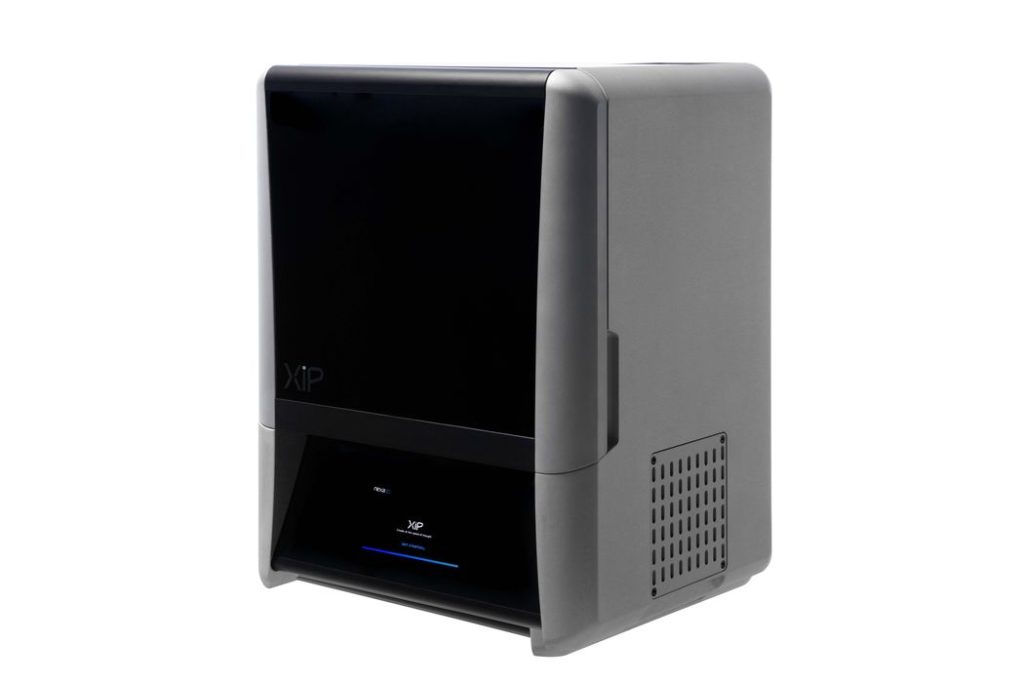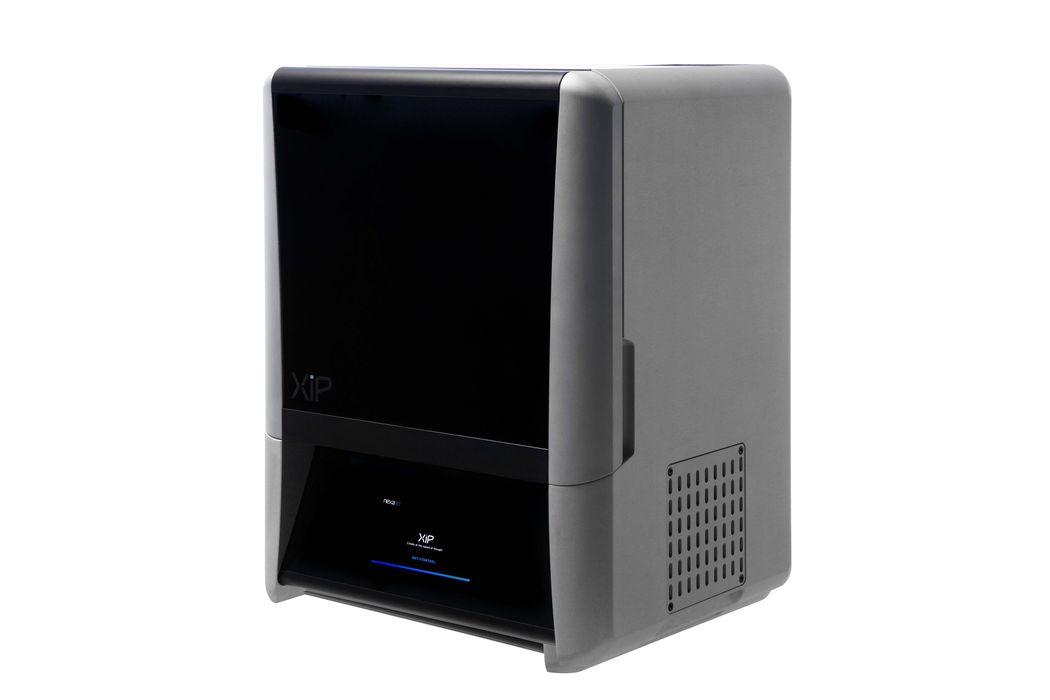
Nexa3D announced the XiP, a 3D printer that is the first for the company in the desktop market.
Nexa3D has been producing very high speed resin 3D printers for the industrial market for several years, and their key feature is speed. They’ve developed an unusual light engine stack that can 3D print resin objects up to 20X faster than typical resin 3D printers.
Currently, they offer a general purpose device, the NXE 400, a dental-specific unit, the NXD 200, and a high speed SLS system, the QLS 350. While these are different machines, they are all designed for industrial use.
Now, they’re offering a new desktop device that uses the same light engine stack from the larger devices, the XiP.
I asked Nexa3D CEO Avi Reichental why a desktop machine:
“The world doesn’t need another slow desktop 3D printer, but this one can run circles around anyone else, considering entire workflow. Giving engineers time back is really important. The ability for them to print 6X a day versus only 1X per day is priceless, especially with functional materials. Why not take the system and package it into a smaller format to unleash productivity?”
Nexa3D’s Michael Currie added:
”A lot of major companies doubling down on product development, this machine addresses that need.”
Nexa3D Technology
How does Nexa3D achieve the high speeds on this device?
It turns out they use a sophisticated combination of light engine technology and interface layer technology. The light engine is able to be perfectly uniform in intensity, and provide high energy transmission. This makes for rapid polymerization of the resin. Meanwhile, they have eliminated the “peeling” step that’s present on almost all other resin 3D printers by using a fluid interface that separates the polymer from the resin tank surface. This allows the device to 3D print continuously, without any need to pause between layers. In a sense, there are no layers: it just keeps printing.
This provides a number of advantages beyond speed. For example, parts can be more delicate because there is no need to account for peeling forces on spindly geometries. This also simplifies the support structure concerns typically present in complex resin prints.
The print method also ensures far greater part accuracy, because there’s nothing pulling on the model as it prints. Finally, there is far greater isotropy between layers due to the continuous nature of printing. Nexa3D said their layers are typically 6-10X stronger than with other vat polymerization systems.
Beyond the technology, their machines are designed to offer a strong workflow that is not only efficient, but also safe. For example, along with the normal air filters and sound suppressors, they’ve designed their resin system to be mostly touchless: resin bottles have handles, no caps, etc. This dramatically reduces the chance of exposing the operator’s skin to toxic resin. They’ve also replaced the usual IPA cleaning solvent with a new low VOC solvent to reduce emissions at the workstation.
Reichental explained:
“We live in that environment, we print all day long. Our machine is designed to keep floods at bay, we have a storage container for bottles, etc. We even packaged the toolkit for finishing and processing with its own mats.”
Nexa3D XiP
Now all that technology is being formed into a smaller, more affordable package: the XiP.
It’s designed to fit on a desktop and provides a reasonable build volume of 190 x 120 x 170 mm. The LCD panel in the light engine is a 9.3” (236mm) 4K screen, and it should be possible to upgrade it to higher resolution 6K or even 8K in the future when these components are available.
The XiP features a pixel size of 0.052mm, and layer sizes as small as 0.050mm, meaning the prints from this device should be extremely crisp. Nexa3D said the resolution could increase when the more advanced LCD panels are available.
Resin capacity on the XiP allows for builds of up to 1.3kg per job without a need for operator intervention.
The XiP has some very interesting resin handling features that will be quite beneficial:
- Toolless vat is magnetically attached (no bolts to get fouled with resin)
- UV-proof tank storage system to maintain resin life and prevent spills
- On-the-fly resin cartridge swap
Reichental explained the intention is to allow for all the materials currently offered on their larger equipment to be offered on the XiP, which include:
- General purpose (Draft, White, Gray, Black, Clear)
- Polypropylene-like
- ABS-like
- PEEK-like
- Elastomeric
- Dental (Model, Splint, Surgical Guide, Impression Tray)
The XiP certainly has quite a number of features that will be of interest to not only professionals performing product development, but also for those requiring dental applications. The ability to place a machine of this power on a desktop is quite unique, and I have a suspicion the XiP will be quite successful.
Via Nexa3D

